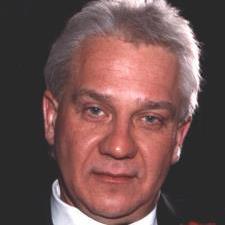Recognize that this is a Linear Programming problem. We are
attempting to model optimal values (production and profit). The
keyword "optimal" tells that we will be using inequalities.
Let....
"x" and "y" refer to each model, quantity of machine throughout,
variables
"A" refer to Assembly
"F" refer to Fabrication
"P" refer to Packaging
"$MP" refer to maximum profit
From the problem statement, we can generate three inequality
objective functions for the total hours for A, F, and P which we
will simultaneously graph. From each, identify "m" (slope) and
"y-intercept" (0,b) for graphing purposes. They are...
3x+4y≤6300....................EqA, assembly hours (not to exceed)
4y≤-3x+6300
y≤(-3/4)x+1575.......EqA rewritten in "slope-intercept" form
3x+2.5y≤4500.................EqF, fabrication hours (not to exceed)
2.5y≤-3x+4500
y≤(-6/5)+1800......EqF, rewritten in "slope-intercept" form
0.8x+0.4y≤1080..............EqP, packaging hours (not to exceed)
0.4y≤-0.8x+1575
y≤-2x+3937.5....EqP, rewritten in "slope-intercept" form
Maximum profit is calculated by...
$MP=300x+375y..............EqMP, maximum profit, both machines
The graph of the above three equations can be found at this URL...
keyword "optimal" tells that we will be using inequalities.
Let....
"x" and "y" refer to each model, quantity of machine throughout,
variables
"A" refer to Assembly
"F" refer to Fabrication
"P" refer to Packaging
"$MP" refer to maximum profit
From the problem statement, we can generate three inequality
objective functions for the total hours for A, F, and P which we
will simultaneously graph. From each, identify "m" (slope) and
"y-intercept" (0,b) for graphing purposes. They are...
3x+4y≤6300....................EqA, assembly hours (not to exceed)
4y≤-3x+6300
y≤(-3/4)x+1575.......EqA rewritten in "slope-intercept" form
3x+2.5y≤4500.................EqF, fabrication hours (not to exceed)
2.5y≤-3x+4500
y≤(-6/5)+1800......EqF, rewritten in "slope-intercept" form
0.8x+0.4y≤1080..............EqP, packaging hours (not to exceed)
0.4y≤-0.8x+1575
y≤-2x+3937.5....EqP, rewritten in "slope-intercept" form
Maximum profit is calculated by...
$MP=300x+375y..............EqMP, maximum profit, both machines
The graph of the above three equations can be found at this URL...
https://www.wyzant.com/resources/files/405142/linear_programming_graph
We will consider the portion of graph in quadrant one (positive
values only for "x" and "y") as any negative values in other quadrants
have no meaning in the context of this problem.
The solution set is the intersection of the the three shaded areas
bounded by points with coordinates (0,0), (0,1575), (500,1200),
and (1500,0). These are the vertices (or corner points) we will
test in EqMP. Plug the values for each of these points into EqMP....
($MP)1=300(0)+375(1575).......substitute point coords (0,1575)
=0+590,625
∴ ($MP)1=$590,625
($MP)2=300(500)+375(1200)....substitute point coords (500,1200)
=150,000+450,000
∴ ($MP)2=$600,000....................maximum value
($MP)3=300(1500)+375(0)........substitute point coords (1500,0)
=450,000+0
∴ ($MP)3=$450,000
($MP)1=300(0)+375(1575).......substitute point coords (0,1575)
=0+590,625
∴ ($MP)1=$590,625
($MP)2=300(500)+375(1200)....substitute point coords (500,1200)
=150,000+450,000
∴ ($MP)2=$600,000....................maximum value
($MP)3=300(1500)+375(0)........substitute point coords (1500,0)
=450,000+0
∴ ($MP)3=$450,000
Disregard point coordinates (0,0) as substitution will produce a
$0 profit value.
So, optimal profit is $600,000 with optimal manufacture of
500 units of machine X and 1200 units of machine Y.
So, optimal profit is $600,000 with optimal manufacture of
500 units of machine X and 1200 units of machine Y.
(You probably have the solution for this problem by now as it was
initially asked on Nov22, put this post will be available for others
to view the graph and procedure)





